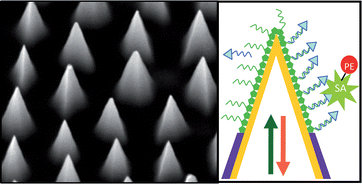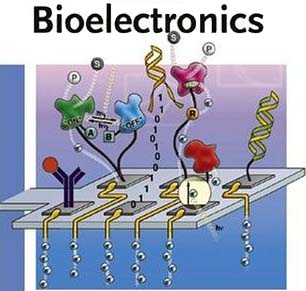Nanochemical electrochemical sensors and a method called assay sandwich component Three (PhD nano _ microelectronics)
Researcher and author: Dr. ( Afshin Rashid)
Note: Signal measurement Electrochemical methods are very suitable for detecting direct DNA oxidation because electrochemical reactions directly generate electronic signals and therefore do not require expensive converters.
In addition, in this process, because the order of the immobilized game can be limited to only a series of electrode substrates, the act of tracking is performed by a series of inexpensive electrochemical analyzes. Electrochemical sensors are used to perform clinical or environmental tests; The basis of the sensitivity of electrochemical signals to direct oxidation or interval catalysis of DNA is also based on the reduction reactions of reporter molecules or enzymes. Various methods are used to measure the signal electrochemically. The basis of signal measurement in direct DNA electrochemistry is based on the oxidation reaction and DNA reduction in a mercury electrode, so the amount of oxidized and reduced DNA is proportional to the amount of DNA that is hybridized with the probe. In addition to the old methods of direct DNA reduction, a method called Stripping Adsorption Voltammetry is used for direct oxidation of DNA, which is a very sensitive method. In the direct electrochemical method, purine is oxidized by materials such as carbon, indiomethin oxide (ITO), gold, and polymer-coated electrodes. Although the direct electrochemical method is a very sensitive method, its application is complex because for direct oxidation of DNA, a high potential ground current is required. Advanced mathematical and numerical methods are also needed to measure each signal. Of course, new methods have been designed to eliminate the interference that occurs in the field with the help of physical methods.
Target DNA is detected by probes fixed on magnetic beads. In this method, after the DNA of the probe collides with the target DNA, the magnetic grains are separated in solution. The collected DNAs are depiurinated in an acidic solution, and the free guanine and adenine nucleosides are collected and analyzed by absorption voltmetry . A similar method has been reported using direct oxidation of guanine, which was able to detect a specific mutation in DNA fragments amplified by PCR. Another method is to use a peptide nucleic acid probe. Using these probes, hybridization is performed more firmly and point mutations in the target DNA can be detected with this method.In the indirect electrochemical method of DNA, electrochemical interfaces are used for DNA oxidation. A very effective specific method is the use of polypyridyl complexes (RUII) and IIO, which electrochemically oxidize guanine by nanomolecules . Trace a sequence of three nucleotides by this method. This method, along with PCR-rt, can be used to overexpress genes in tumor samples and is highly sensitive. In the same way, chemically altered organic bases are introduced into the PCR product and the DNA obtained by some methods is identified. Although this method is very sensitive, it is not yet clear whether this method is suitable for clinical diagnoses. One of the advantages of this method is that it is not complicated.
Conclusion:
Several methods were used to detect target DNA with reductant active reporter molecules labeled with the molecule. Using physical methods, the order of the labeled game up to the range in this method includes measuring the assay sandwich component Three, in which case the regenerated labeled material is attached to a synthetic DNA fragment, which is a DNA fragment. Attaches to the probe-target complex , in other words, the reduced regenerated material is attached to a synthetic fragment, which is attached to or attached to the probe-target complex, in which case a change in the target DNA is required. Is created and destroyed, which causes the probe and the sequence of the marked game to be put together. Labeling is the use of a ferrosin-labeled probe placed on a gold electrode. Using this technique, the target DNA can be trapped and a change in the ferrosin molecule can be made as a result of the contact , which gives a signal to the gold electrode, and this signal is measured as a Faraday current.
Researcher and author: Dr. ( Afshin Rashid)
PhD in Nano-Microelectronics




